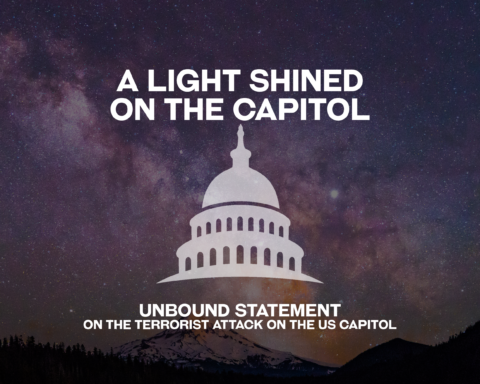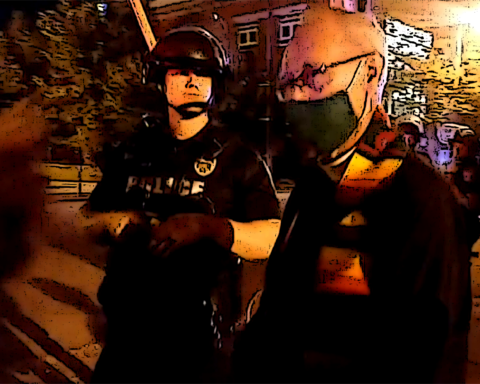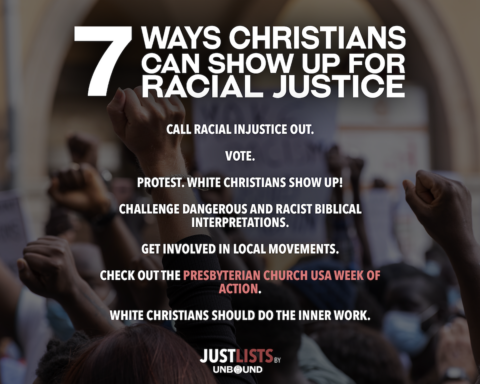The Situation in Richmond, CA
Testimony by Andrés Soto before the PC(USA) Drug Policy Task Force, February 14, 2015. Watch testimony in minutes 13:45 – 25:00 of this video of Day 2 of the Richmond Hearings.

I grew up here in this town, and I see my life as a slice of a larger continuum of history. We know that dating back to the Civil War, when morphine was turned into heroin and morphine itself was widely available, it led to the largest number of morphine addicts, even to this day, during the Civil War. It was widespread as a painkiller and was used to keep your babies quiet and in all sorts of concoctions, until the Food & Drug Act, in 1906. They started regulating that, but there was always going to be this market of folks who were hooked and couldn’t get prescriptions for it, because now it was a controlled drug. So that created an underground market, which was filled primarily by opportunistic children of immigrants, who in those days were Jews, Irish, Italians, and that sort of thing.
Come to the 1920s, and we tried to prohibit the drug of alcohol. And that enriched people who built tremendous economic empires – the Al Capones, and Mike Lanskys and Busby Siegels of the world. And it undermined the authority of law within the United States. So then it was called a failed experiment, and was repealed in 1933 with the Roosevelt government. So you have all these prohibitions agents around. And now they were unemployed. They have to find jobs for the cops.
So what was happening? Well, you know, the Mexicans had access to marijuana, and the Cubans were in connection with the South Americans, they had access to cocaine on a very minor level. In 1937, they made those drugs illegal, which then made it once again the forbidden fruit. And that’s what attracted folks in other communities – African American communities, white communities, and there’s a whole culture of reefer, as they used to call it back in the 30s and 40s. It was associated with jazz music, and if you’ve ever seen that movie, Reefer Madness, you’ll see how they portrayed it culturally as a way to try to scare people away from it.
___________________________________________
Once something becomes illegal, then there’s an increase in the profit margin. [People] do a risk assessment as to whether or not you can get into this. And who is most likely to take the higher risk? The folks who are at the bottom of the economic ladder…who historically have been excluded because of the history of racism.
___________________________________________
Once something becomes illegal, then there’s an increase in the economy, the profit margin. And everybody’s got to do a risk assessment or cost-benefit analysis as to whether or not you can get into this. And who is most likely to take the higher risk? The folks who are at the bottom of the economic ladder. And frequently they are the people who are historically excluded, and in this country, because of the history of racism, certainly African Americans have been historically, Mexicans have been excluded, Puerto Ricans, Cubans, Chinese, and other folks. And even until World War II, certain of what we now call white folks – the Jews, the Italians, Irish, all these kind of people. So they entered into the underground economy. And I view those folks as the proto-capitalists. These are people that are excluded from the official system of capitalism, but they are eager and aggressive to make money. And since they are excluded from the formal avenues to capitalism like Ivy League universities, they go to the universities of the streets. And this is where they learn their trade. And this puts them at risk from the way that we enforce the drug laws.

Image: Public Domain
We use our local police as the front lines in the war on drugs, which means they’re targeting neighborhoods where the byproduct of the illegal economy impacts people. In order to engage in the illegal economy, frequently violence is used as a way to enforce the rules of the street, the laws of the streets, just like our national government uses violence in order to enforce international law.
Fast forward: the impacts here in Richmond have been profound in the sense of the impact on the Latino community. Chicanos who were involved in bringing in marijuana back in the old days, people like me who were bringing Mexican brown. Where did it come from? It came from Mexico. Who brought it? Mexicans. But the market was here in the broader community. Heroin was always a very narrow, small market, and while some Chicanos were involved in that trade with the Mexican black tar heroin, there was also the heroin coming in from Southeast Asia and China.
___________________________________________
Then the explosion of cocaine happened, in order to finance civil wars in Central America, to destroy the revolution in Nicaragua. That allowed some of these people, especially Nicaraguan gangsters like the Meneses Clan, to get involved.
___________________________________________
Then cocaine happened. And the explosion of cocaine, in order to finance civil wars in Central America, to destroy the revolution in Nicaragua, that allowed some of these people, especially Nicaraguan gangsters like the Meneses Clan, to get involved. I used to work with the City of Richmond, after I got out of college, in what is now called employment and training. And one day this guy came in, he had an unusual name, Jairo Meneses, clearly from an elite not from a Mexican rural area; turned out he was Nicaraguan. He was educated, he spoke in a sophisticated way, he was dressed well. And we used to have a court-mandated box, it was a question on the application for the City, have you ever been convicted of a felony? And he marked yes. I asked him about it, and he said it was for cocaine trafficking. I said OK.
 And then I came to read Gary Webb’s book, The Dark Alliance, about the CIA and cocaine trafficking. The film Kill the Messenger was about the aftermath of that. And there it was. His uncle Norwin Meneses was the main importer or trafficker, he’d been involved during the Somoza regime in Central America. And when Somoza got kicked out, he moved up to the United States and he became the conduit of cocaine into the Bay Area. And his nephew Jairo, who is mentioned in the book, was one of his captains here. And he was right here in Richmond, living in Richmond.
And then I came to read Gary Webb’s book, The Dark Alliance, about the CIA and cocaine trafficking. The film Kill the Messenger was about the aftermath of that. And there it was. His uncle Norwin Meneses was the main importer or trafficker, he’d been involved during the Somoza regime in Central America. And when Somoza got kicked out, he moved up to the United States and he became the conduit of cocaine into the Bay Area. And his nephew Jairo, who is mentioned in the book, was one of his captains here. And he was right here in Richmond, living in Richmond.
What happened was that, in Richmond, the people who were smoking the crack cocaine were primarily African Americans, and if you go over the border into San Pablo where the Hells Angels still had sway, people were strung out on crank. These folks then started distributing it within the Latino community. It was always a lot cheaper within the Latino community than what they were selling to the African Americans or to the whites, and so people’s lives started getting ruined. It was mostly powder cocaine at that time. But one of the aspects of it is with incarceration, that reinforces gang culture, and it turned people into gangsters who were killing each other in the prisons because of loyalty to the gangs. It spilled out in the streets and then they started recruiting the teenagers.
___________________________________________
Incarceration reinforces gang culture. It turned people into gangsters who were killing each other in the prisons because of loyalty to the gangs. It spilled out in the streets and then they started recruiting the teenagers.
___________________________________________
So by the 1990s, both the flooding of the streets with the semi-automatic weapons beginning in the 1990s and then of course the expansion of the cocaine trade, that’s when we started seeing gang warfare really build up. In the mid-1990s is when we had the highest rates of violence in Richmond. It was an average of 55 homicides per year, most of it drug-related, almost all done with handguns and assault weapons. Within the Latino community we saw the gang violence.
 Now we’re having 13 or 11 homicides a year. Of course we’re still worried about it and the city still has a reputation of violence, but it’s nowhere near what it was like in those days. And the school district had a role, because when the gangs started emerging, they didn’t know what to do with it. Because normally it was a little neighborhood group that had always been around, it was more West Side Story type, you know: ‘Let’s have a rumble’ type thing. But when it started becoming lethal violence, then they got worried. Who did they turn to?
Now we’re having 13 or 11 homicides a year. Of course we’re still worried about it and the city still has a reputation of violence, but it’s nowhere near what it was like in those days. And the school district had a role, because when the gangs started emerging, they didn’t know what to do with it. Because normally it was a little neighborhood group that had always been around, it was more West Side Story type, you know: ‘Let’s have a rumble’ type thing. But when it started becoming lethal violence, then they got worried. Who did they turn to?
They turned to the prison system. How do we deal with these kids who are Surenos or Nortenos or Project Trojans or Sons of Death? And they said you got to segregate. And what that did was at Richmond High, because this is Northern California, the Nortenos had always been the dominant factor, but then immigration made the Surenos a larger arm. And so they took the Nortenos out and put them in De Anza High School, Pinole High School, Hercules. And guess what? They became colonies. And all of the sudden places where they didn’t have gangs, now the Nortenos had sway. And so they actually helped the spread of the gang culture, just the way the prison system reinforces gang culture. And so that’s one of the legacies.
*****
AUTHOR BIO: Andrés Soto is an organizer in Richmond, California with Communities for a Better Environment. He also works with the Richmond Progressive Alliance, North Richmond Shoreline Open Space Alliance, and hosts a public affairs program on KPFA radio station.





Unbound Social